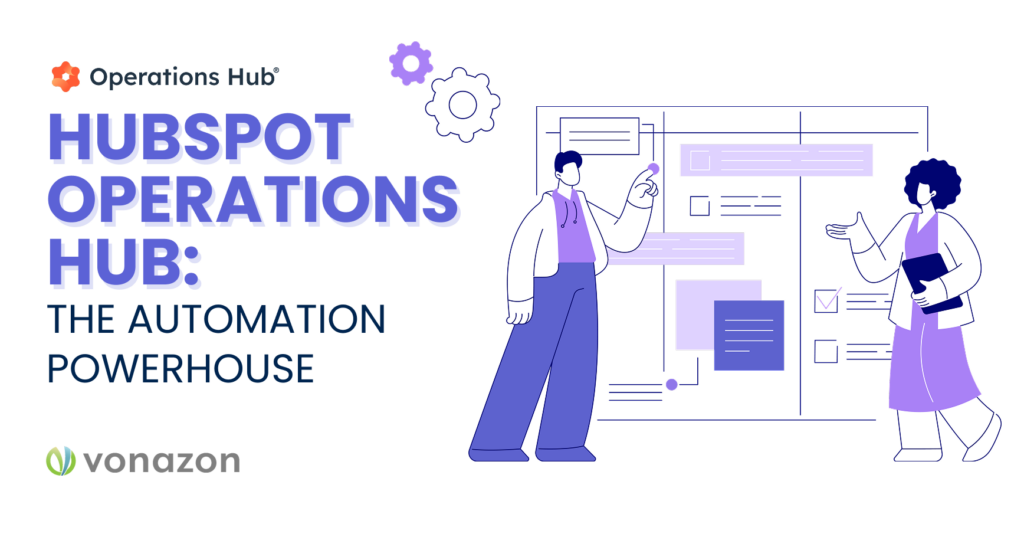HubSpot Operations Hub: The Automation Powerhouse
Most marketing teams know HubSpot for its CRM, email tools, or buttery-smooth landing page builder. But buried beneath the gloss of templates and contact records lies HubSpot Operations Hub – an underappreciated workhorse that’s quietly making life easier for RevOps teams, data engineers, and anyone who’s ever tried to duct-tape a Salesforce integration to a Slack alert.
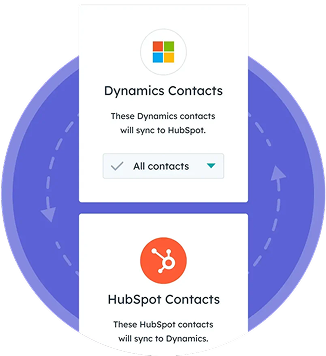
This is the Swiss Army knife of your HubSpot portal. And if you’re still trying to scale with disjointed tools, spaghetti-style automation, or messy data, it’s time you met the ultimate solution.
What Is HubSpot Operations Hub?
In short: Operations Hub is your automation and data cleanup toolkit, natively inside HubSpot. It’s the platform’s answer to messy data, integration nightmares, and siloed operations. It lets you sync your data across apps, automate workflows beyond marketing, and even write custom code actions that behave like mini-apps inside your CRM.
There are four main features that turn this from a luxury into an absolute necessity:
Let’s unpack those without turning this into a dry spec sheet.
Data Sync:
No More Manual Import/Export Torture
Raise your hand if you’ve ever been personally victimized by a CSV file.
Exactly.
Data Sync in Operations Hub is built on PieSync, which HubSpot acquired a few years back. It enables bidirectional syncing between HubSpot and over 100 apps, including Salesforce, NetSuite, Zendesk, Google Contacts, Mailchimp, and all the other major players.
This isn’t just a trigger-and-action workaround – it’s real-time sync with smart field mapping, conflict resolution, and no need for third-party middleware. Your sales team updates a contact in Salesforce? Boom, it’s reflected in HubSpot instantly.

These automation capabilities improve both efficiency and employee morale, as businesses using Data Sync experience a 30% reduction in manual data entry and cleansing work.
Programmable Automation:
Going Beyond Workflows
Let’s say you want to rotate leads based on availability, assign tasks dynamically depending on industry and lifecycle stage, or trigger a custom webhook that pings an internal dashboard, Slack channel, and a Google Sheet – all simultaneously.
With traditional workflows, that’s either impossible or duct-taped together with apps, zaps, and prayers.
Operations Hub lets you write JavaScript inside your workflows. You get full control over logic, branching, calculations, and API calls. Basically, you can turn HubSpot into the central brain of your GTM motion.

Not a coding wizard?
That’s okay. You can hire someone who does (or work with a partner agency like Vonazon) to build it once, and let it scale forever.
Data Quality Automation:
Clean Up On Every Aisle
Here’s a familiar horror story: duplicate records, missing capital letters, free-text job titles like “ceo of vibes,” and phone numbers written like someone dropped their keyboard.
This is a major concern worth addressing, as 76% of businesses say poor data quality impacts their ability to personalize communications.
Enter Data Quality Automation. This feature scans and auto-corrects common formatting issues, like capitalization, spacing, date standardization, and more. It also alerts you to duplicates and gives you tools to merge with confidence.
The best part? It runs in the background, like a Roomba for your CRM.

Custom Properties, Datasets, and Reporting
Operations Hub Enterprise kicks the door open for datasets, which are curated tables of data that analysts can use to build reports. Instead of pulling data from 17 custom properties across 12 objects, you can pre-aggregate and simplify with a dataset that shows exactly what you want.
This is a dream if you’ve ever opened a HubSpot report and muttered, “What the heck is this even showing me?”

There are four main features that turn this from a luxury into an absolute necessity:
#1
Create a score based on product usage metrics
#2
Normalize lead scores across business units
#3
Add weighted logic to contact properties
Who Is Operations Hub Actually For?
The secret sauce here is that Operations Hub doesn’t just help your ops team. It quietly boosts every department:
-

Marketing
gets cleaner segments and more reliable triggers.
-

Sales
sees up-to-date records and smarter lead assignments.
-

Service
gains context and automation to resolve tickets faster.
-

RevOps
gets a unified, scalable system that plays nicely with other tools.
This tool isn’t just for big enterprise orgs either. SMBs who are scaling fast often hit their “data chaos moment” early, and Ops Hub is how they avoid becoming a case study in what not to do.
Why Operations Hub Matters
Without a centralized ops layer, your growth eventually hits a ceiling. At first, it might seem like teams are moving fast, spinning up their own workflows to solve immediate problems. But that speed comes at a cost. Without alignment, those workflows start to overlap, conflict, and trigger in ways no one intended. You end up with marketing automations stepping on sales processes, service teams getting left out of key notifications, and an entire CRM full of logic that only one person understands.
Meanwhile, your data starts to rot. Records get duplicated, phone numbers are entered six different ways, and job titles turn into a free-text guessing game. The longer you let it sit, the harder it is to untangle. Personalization takes a hit, lead scoring gets messy, and suddenly, that shiny ABM campaign is built on a foundation of half-truths.
And then there are the integrations, the ones that quietly fail in the background without alerting anyone until it’s too late. Maybe a form submission didn’t sync. Maybe a deal was closed in one system but never updated in another. Either way, someone’s losing a sale, and no one knows until the end-of-quarter review.

Operations Hub isn’t just a fancy toolkit. It’s your insurance policy against all of this tech debt. It brings order to the mess, establishes a scalable foundation, and gives your teams the visibility and control they need to grow without tripping over their own tools. It’s what keeps your mar tech stack from imploding when marketing pivots mid-quarter or sales suddenly needs five new lifecycle stages to track.
Your Center of Operations – Streamlined
HubSpot Operations Hub gives you the muscle and finesse to:
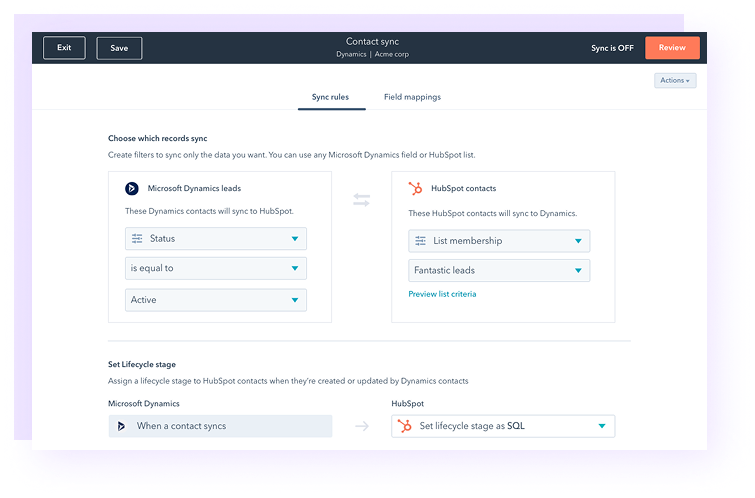
Sync Data
in real time across your tech stack
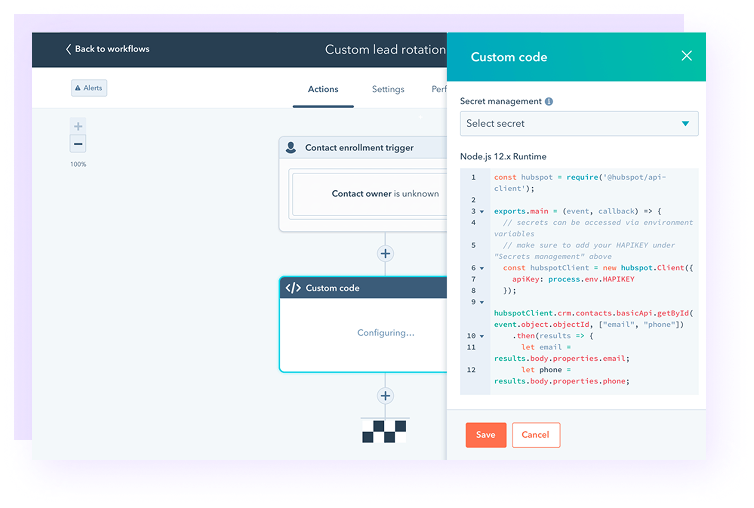
Automate Complex Logic
with custom code
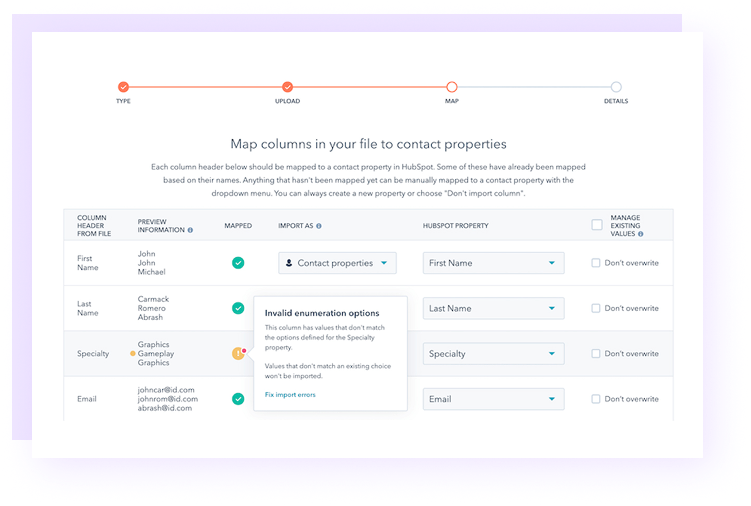
Clean and Standardize Data
without manual effort
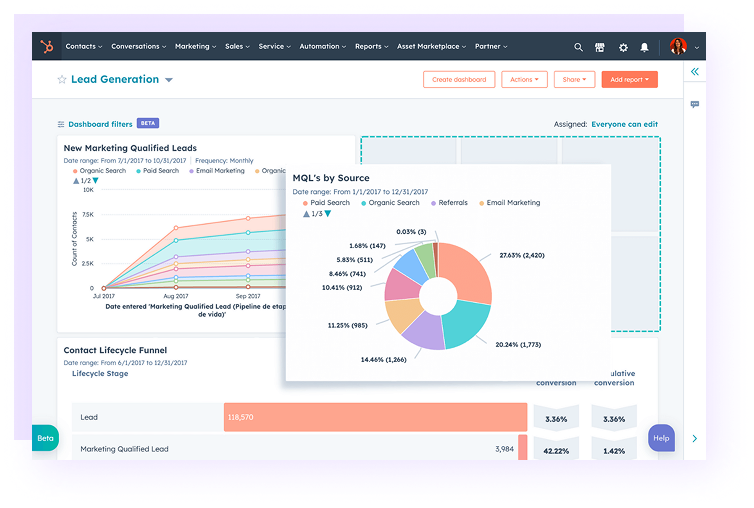
Build Cleaner, Smarter Reports
with better data visibility
Whether you’re a startup starting to feel the heat or an enterprise neck-deep in API spaghetti, Operations Hub is the tool that brings order to the madness.

And if you want to make sure you’re making the most out of your investment, that is where Vonazon comes into play. Vonazon is an Elite HubSpot Partner who knows this platform inside and out. We build clean, scalable automation and help teams like yours unlock the full potential of Ops Hub, without any headaches.


